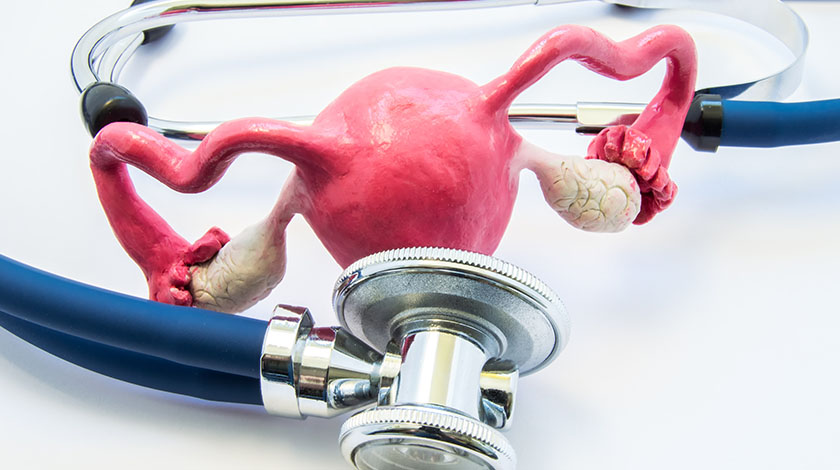Uterine fibroids are growths of the uterus that are almost always noncancerous. Around 20% to 80% of women develop fibroids by the age of 50, and it is the most common in women between their 40s and early 50s.
Uterine fibroids symptoms

Fibroids usually do not have any symptoms. However, some women with fibroids may experience the following.1
- Heavy bleeding during menstruation
- Pressure on the bladder and rectum
- Feeling full in the lower abdomen
- Infertility
- Pain during sex
Uterine fibroids causes
It is not known what causes uterine fibroids to grow. Researchers believe possible causes include hormones and genetics.
Types of fibroids1

Fibroids mostly grow in the wall of the uterus. Depending on where they are located, they can be categorized as:
- Submucosal — those that grow in the uterine cavity
- Intramural — those within the uterine wall
- Subserosal — those that grow on the outside of the uterus
Uterine fibroids vs ovarian cysts
Uterine fibroids are often mistaken for ovarian cysts. Ovarian cysts are fluid-filled sacs that form in or on the ovaries. They often form during the menstrual cycle and can heal on their own. Like uterine fibroids, most cysts do not cause any symptoms, but large cysts may cause pelvic pain, weight gain and frequent urination.2
Risks of Uterine Fibroids
Women with fibroids may have a higher chance of having issues during pregnancy and delivery. The most common issues include the need for cesarean section, placental breech and preterm delivery.
Treatments of Uterine Fibroids
Factors including age and future pregnancy plans should be taken into account before deciding on the type of treatments:
- Medications
- Surgery: Myomectomy (removing the fibroids), hysterectomy (removing the uterus), endometrial ablation (removing the uterine lining to control heavy bleeding), myolysis (destroying the fibroids with the use of a needle), etc.
Cigna HealthFirst Elite 360 Medical Plan offers comprehensive and personalized medical coverage across the stage prevention, diagnosis, treatment and recovery, with a range of hospital and surgical benefits, optional insurance benefits with an annual limit of up to HK$50 million, personalized health assessment, three critical illnesses(cancer, stroke and heart attack) all-rounded care and international medical concierge service. A 360-degree total health protection that spans across all the key stages of your health journey. Learn more here.

